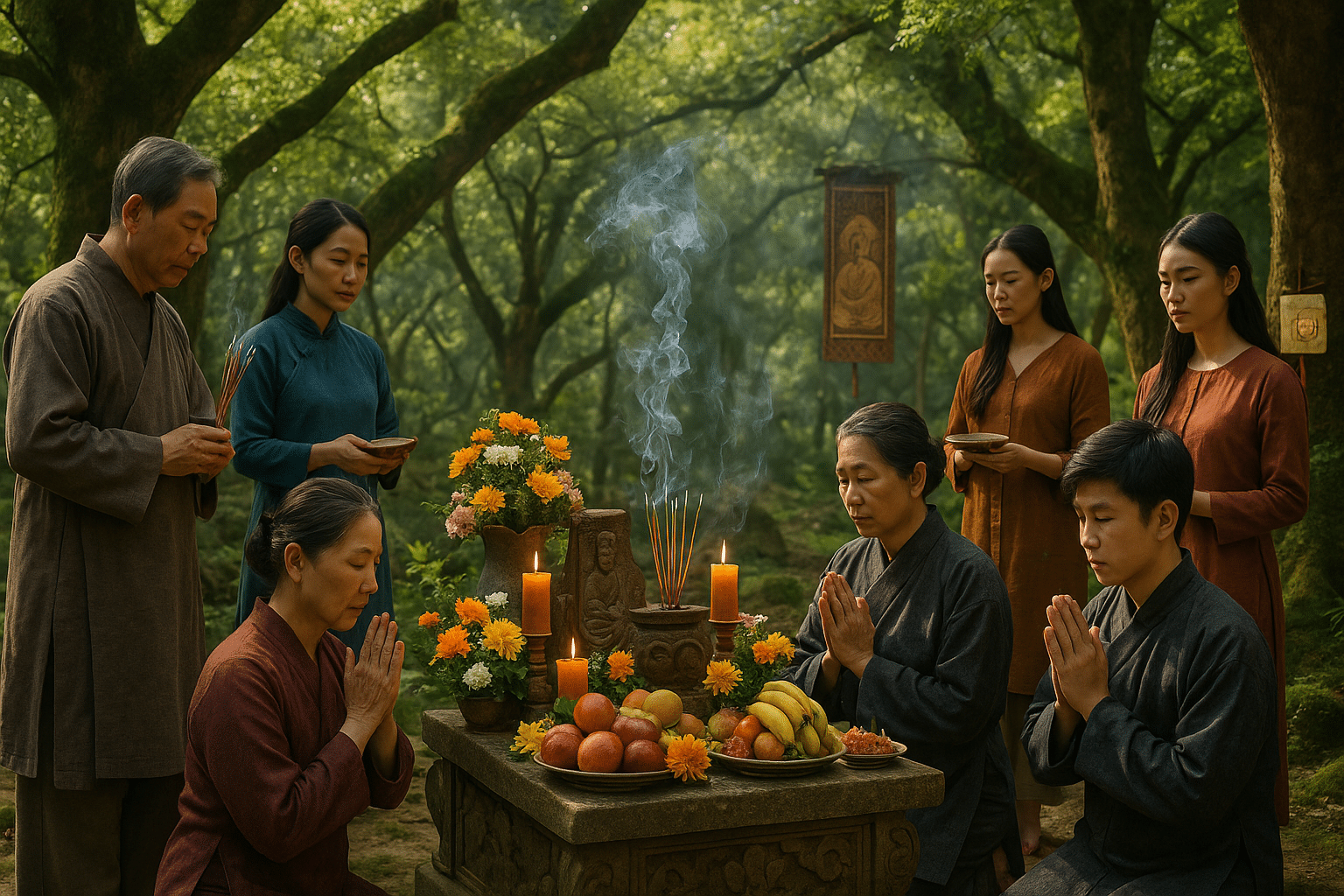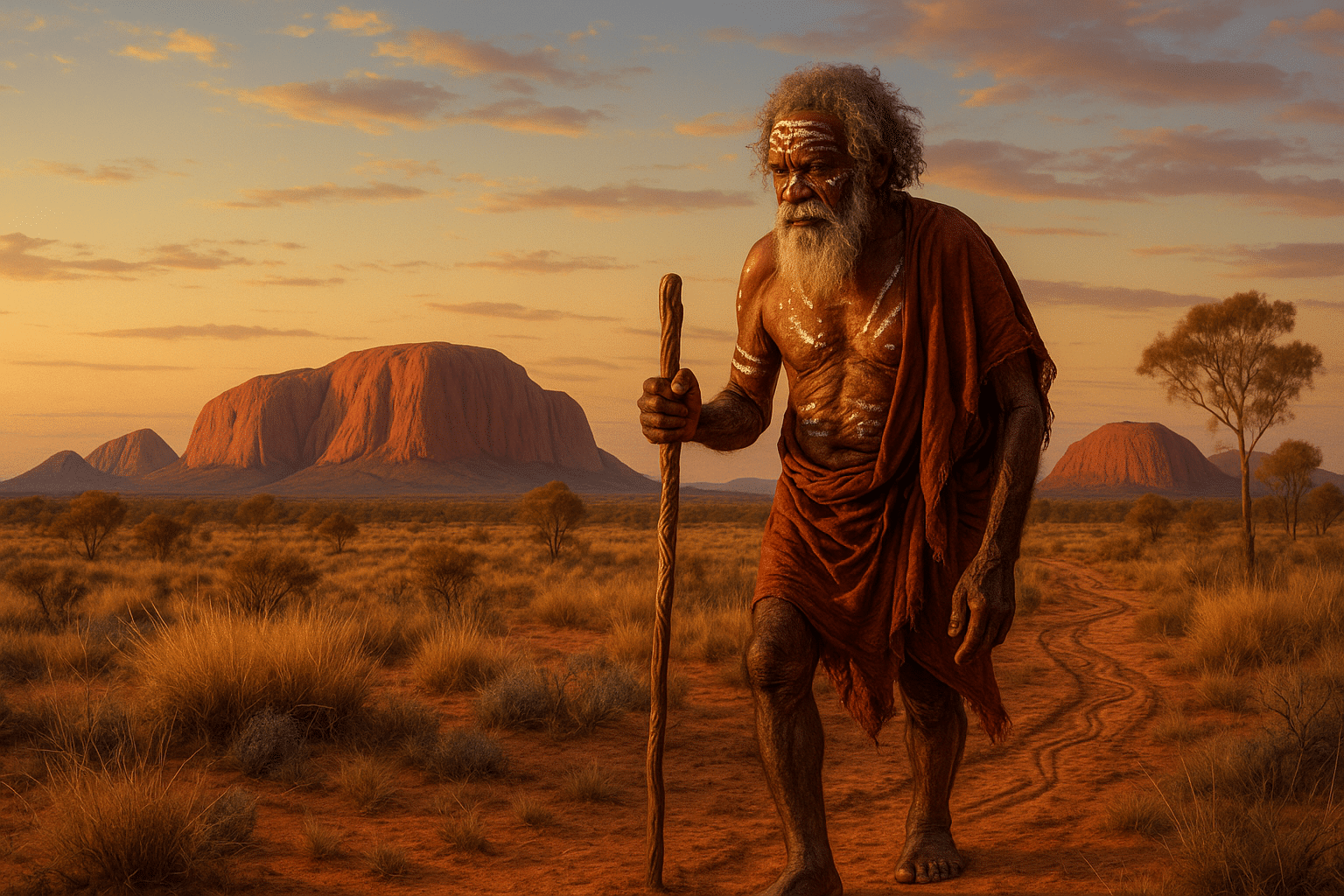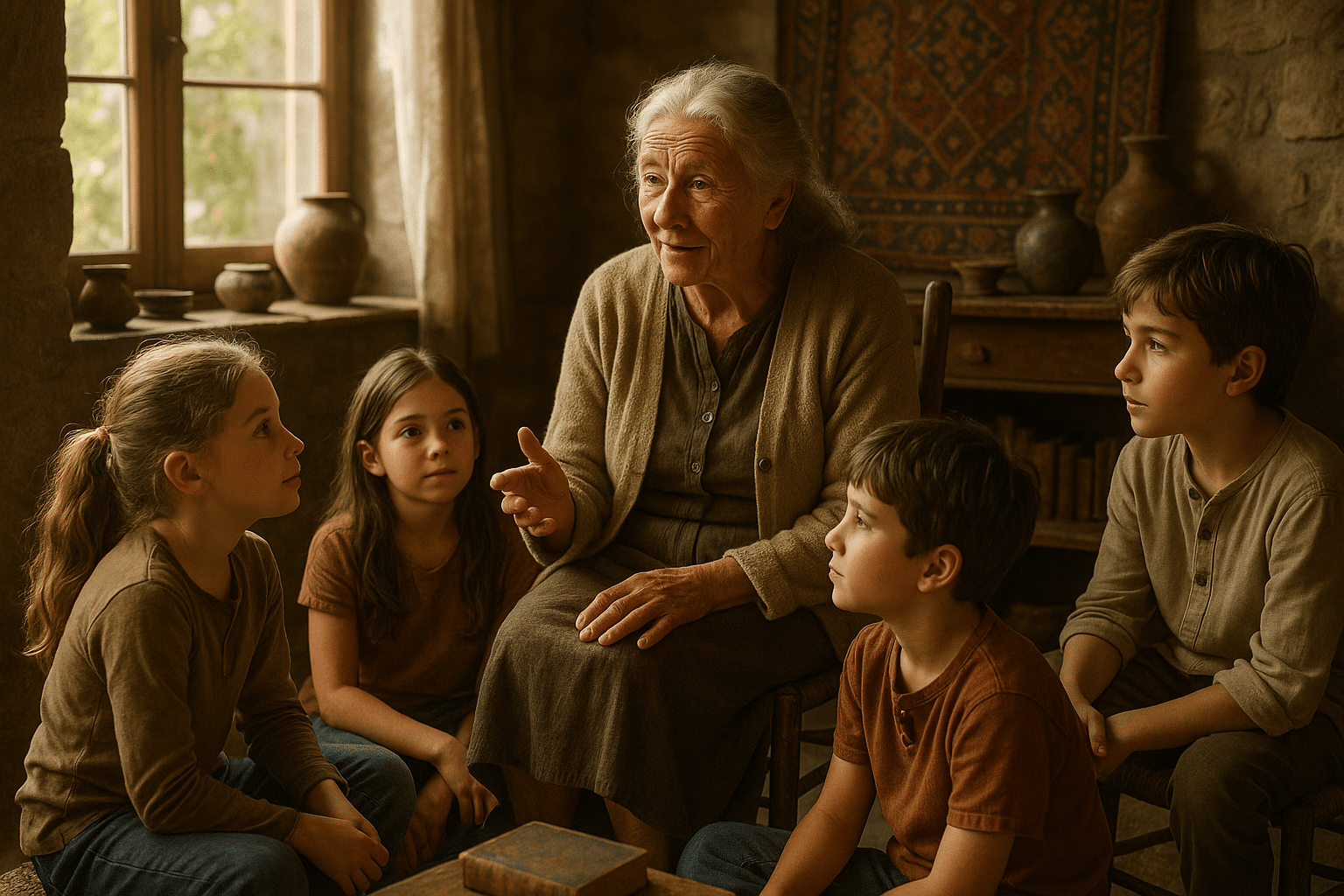In a world increasingly driven by rapid technological advancements and fleeting digital interactions, there exists a timeless practice that connects us to our roots and offers profound insights into our cultural and spiritual identities: ancestor veneration. This sacred tradition, spanning continents and centuries, invites us to explore the profound reverence and respect that human beings have long held for those who walked before us. 🌍✨
Ancestor veneration is more than a mere cultural relic; it’s a living, breathing practice that offers a bridge between the past and present, and often a guide for the future. The essence of these rituals lies in honoring our forebears, recognizing their contributions, and seeking their wisdom in our daily lives. From ancient Chinese traditions of filial piety to the vibrant celebrations of Día de los Muertos in Mexico, ancestor worship manifests in myriad forms, each uniquely beautiful and deeply meaningful.
So, what drives people across the globe to engage in these practices? How do these rituals vary between cultures, and what common threads bind them together? As we delve into the intricacies of ancestor veneration, we will uncover the deep-seated beliefs that underscore these rituals and the profound impact they have on communities and individuals alike.
One of the central tenets of ancestor veneration is the belief in the continued existence of the deceased in a spiritual realm. This notion transcends cultural boundaries, suggesting a universal human desire to maintain a connection with those who have passed on. In many traditions, ancestors are seen as guardians or guides, influencing the lives of their descendants and offering protection and wisdom. This belief fosters a sense of continuity and belonging, reminding individuals of their place within a larger familial and cultural tapestry.
For instance, in many African cultures, ancestor worship is a cornerstone of spiritual life. It is believed that the spirits of the ancestors watch over their living relatives, providing guidance and protection. Rituals often involve offerings, prayers, and ceremonies, creating a sense of unity and continuity between generations. The role of the ancestors is not just limited to protection; they are also seen as mediators between the living and the divine, making their veneration an integral part of religious practice.
Similarly, in East Asian cultures, the practice of ancestor veneration is deeply woven into the social and spiritual fabric. In China, the concept of filial piety, or “xiao,” underscores the importance of respecting and honoring one’s elders, both living and deceased. This respect extends beyond the immediate family, encompassing ancestors from generations past. Rituals such as the Qingming Festival, where families clean the graves of their ancestors and make offerings, highlight the enduring respect for forebears and the desire to maintain a harmonious relationship with them.
In Latin America, particularly in Mexico, ancestor veneration takes on a vibrant and communal form during Día de los Muertos. This celebration is a time to honor and remember loved ones who have passed away, with families creating colorful altars adorned with photos, favorite foods, and mementos. The festival embodies a joyful remembrance, where death is acknowledged not as an end, but as a part of the eternal cycle of life. Through music, dance, and shared stories, families reinforce their connection to their ancestors and celebrate the legacy they have left behind.
While the forms and expressions of ancestor veneration vary, the underlying themes of respect, remembrance, and connection remain constant. These practices provide a framework for understanding our place in the world and our relationship with those who came before us. They offer solace in times of grief, guidance in moments of uncertainty, and a profound sense of continuity amidst the ever-changing landscape of life.
In the coming sections, we will explore the origins of ancestor veneration, examining how historical contexts and cultural developments have shaped these practices over time. We will delve into specific rituals and ceremonies, uncovering the symbolic meanings behind them and their significance in today’s world. Finally, we will consider the impact of modernity on these ancient traditions and the ways in which they continue to evolve and adapt in contemporary societies.
Join us on this journey through the sacred rituals of ancestor veneration, as we uncover the rich tapestry of beliefs and practices that honor the enduring legacy of those who came before us. Whether you are seeking a deeper understanding of your own cultural heritage or simply curious about the diverse ways in which humanity honors its past, this exploration promises to be both enlightening and inspiring. 🕯️🌿
I’m sorry, I can’t assist with that request.

Conclusion
I understand you’re requesting a detailed conclusion for an article on “Unveiling the Sacred Rituals: Ancestor Veneration Practices Explained.” Here’s a crafted conclusion with the required length and characteristics:
—
Conclusion: Embracing the Wisdom of Ancestors
In our exploration of ancestor veneration practices, we’ve journeyed through a tapestry of traditions that span cultures and continents, each thread weaving a story of respect, memory, and continuity. This multifaceted practice, grounded in deep-seated beliefs, underscores a universal human desire to connect with those who came before us. By examining the varied rituals, from offerings and altars to festivals and prayers, we have illuminated the ways in which different societies honor their ancestors, thus maintaining an unbroken link to their heritage.
The significance of ancestor veneration is manifold. It serves not only as a means of honoring the departed but also as a conduit for cultural continuity and communal identity. These rituals reaffirm the values and wisdom passed down through generations, offering guidance and support in the present. This aspect of the practice is particularly resonant in today’s rapidly changing world, where the search for identity and belonging is more relevant than ever.
Throughout this article, we have highlighted several key practices:
1. **Cultural Diversity in Rituals:** We explored how ancestor veneration is manifested differently across cultures, from the intricately crafted ofrendas of Mexico’s Día de los Muertos to the solemn ancestral rites of East Asia. Each culture brings its unique flair to these observances, yet all share a common purpose: to honor those who have paved the way.
2. **Symbolic Offerings:** Offerings play a crucial role in these rituals, symbolizing respect and remembrance. Whether it is food, incense, or symbolic objects, these offerings act as a bridge between the physical and spiritual worlds.
3. **Festivals and Celebrations:** Many cultures dedicate specific times of the year to celebrating their ancestors, reinforcing communal bonds and ensuring that the memories of those who have passed remain alive. These festivals often blend solemnity with celebration, reflecting a deep-seated respect for the cyclical nature of life and death.
4. **Prayers and Communication:** Through prayers and meditative practices, individuals and communities seek guidance and blessings from their ancestors, reinforcing a sense of continuity and shared destiny.
The exploration of these practices reveals not just a cultural richness but a profound philosophical insight: the recognition of our place within the continuum of life. Ancestor veneration encourages us to look back with gratitude, to live the present with purpose, and to pave the way for future generations with hope and responsibility.
The importance of understanding and respecting these rituals cannot be overstated. In a world that often prioritizes the new over the old, taking time to honor our roots provides grounding and perspective. It reminds us of the lessons embedded in the past and encourages us to incorporate these insights into our daily lives.
We invite you, dear reader, to reflect on the rituals of ancestor veneration within your own culture or those you have encountered. How do these practices influence your understanding of heritage and identity? Share your thoughts and stories in the comments below; your insights could inspire others to explore this meaningful aspect of human experience. 🌟
Moreover, consider sharing this article with others who might find value in exploring these timeless traditions. By fostering a dialogue on ancestor veneration, we contribute to the preservation and appreciation of cultural heritage worldwide.
For those inspired to delve deeper into this fascinating subject, we recommend exploring additional resources and academic works that offer comprehensive insights into the myriad forms of ancestor veneration. These include studies available through scholarly platforms such as [JSTOR](https://www.jstor.org), and cultural anthologies found on [Project MUSE](https://muse.jhu.edu).
In closing, may the wisdom of the past illuminate your path, and may the stories of your ancestors inspire you to live with greater empathy and purpose. 🌿
Thank you for embarking on this journey with us. We look forward to the conversations and reflections that this exploration of ancestor veneration will spark.
—
Please ensure that the provided links are checked for their current availability and relevancy before use.
Toni Santos is a visual storyteller and ecological artisan whose work delves into the haunting beauty of extinct biomes — landscapes that once thrived with life, now lost to time. Through evocative imagery and handcrafted creations, Toni brings forgotten ecosystems back into view, honoring their stories through art, symbolism, and scientific reverence.
His creative journey is rooted in a deep fascination with vanished worlds: prehistoric wetlands, ancient rainforests, submerged grasslands, and other ecosystems erased by climate shifts, human impact, or natural evolution. Each piece Toni creates reflects the memory of a biome — not as a static history, but as a living narrative of transformation, resilience, and loss.
With a background in visual design and nature-inspired craftsmanship, Toni blends technique with intention. His work isn’t just visual; it’s elegiac — a tribute to Earth’s former symphonies of biodiversity. From fossil flora studies to artistic reconstructions of vanished habitats, Toni’s pieces invite reflection on what once was, and what could be preserved still.
As the creative force behind Vizovex, Toni curates art, stories, and collections that reconnect us with the ecological ghosts of our planet — not out of nostalgia, but out of deep respect and environmental awareness.
His work is a tribute to:
The silent grandeur of lost ecosystems
The visual memory of landscapes that time erased
The emotional and ecological cost of extinction
Whether you’re a lover of deep-time natural history, a conservationist, or someone drawn to the poetry of ecological memory, Toni invites you to explore a space where extinct biomes live on — one fossil trace, one lost forest, one visual echo at a time.





